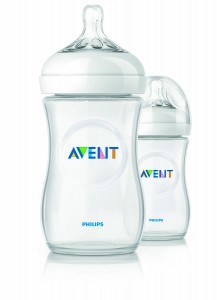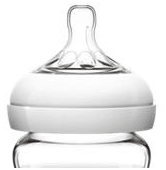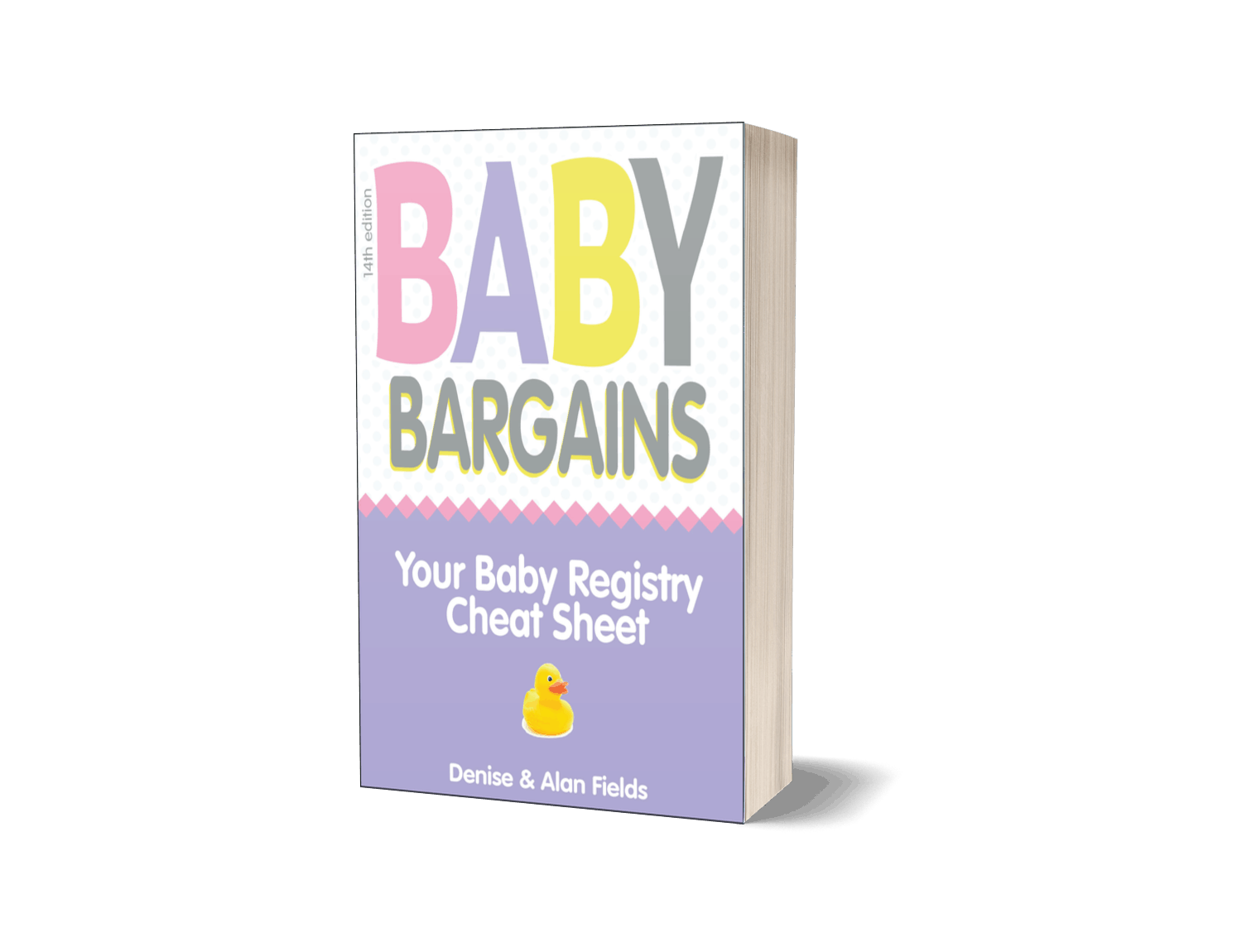 Web site: USA.Philips.com
Web site: USA.Philips.com
Here’s our pick for the best baby bottle: Avent’s bottle options are best-in-class (Dr. Brown’s is our other pick in the category).
Avent makes two types of baby bottles: Anti-colic (formerly Classic+) and Natural (pictured). The big difference between the bottles is their nipples. The Natural is breast-shaped plus it has “Comfort Petals,” which are supposed to make the nipple softer and more flexible. The Classic+ has a plain nipple. FYI: you can’t use the Natural nipples on the Classic+ bottles or visa versa.
Both bottles use Avent’s twin valve, anti-colic system to keep baby from ingesting too much air. And they are both compatible with Avent’s breast pump, the Comfort Double (our review of that pump is here). While the Classic+ and the Natural are available in the BPA-free plastic, only the Natural comes in a glass version.
The prices per bottle average around $7.50 each—the Natural bottles run about $1.50 more than the Classic+. There are also colored bottles (pink or blue) and glass bottles that are bit more in price. Starter sets range from $34 to $40 and include three 4 oz. bottles and two 9 oz. bottles. Avent even offers a gift set that includes their microwave sterilizer for about $50.
Avent bottles are priced in the middle of the pack for baby bottles—if you find them pricey, there is some good news: they go on sale frequently.
Avent bottles are perhaps the most popular baby bottles on the market today, along with Dr. Brown’s. Many parents swear by them for reducing colic and gas and being easy to clean (easier than the multi-piece Dr. Brown’s bottles). Feedback from readers is excellent.
The biggest complaint about Avent: the measurement markings on the side rub off after a few months of use. This understandably frustrates parents who’ve shelled out $7 a bottle, only to discover its now hard to measure out formula and water.
Some parents have trouble with leaking, although this may be because some folks over-tighten the top. On Avent’s web site, they address this with a graphic of the correct amount to tighten. Here’s what the bottle should look like:
Leaks can also occur with the Classic+ bottle if the gasket ring is incorrectly installed. Make sure the blue side is always facing down. And while there is no separate gasket for the Natural bottles, the nipple has to be set into the bottle correctly or it too can leak. This blog post has some good overall advice on how to avoid leaks with Avent bottles.
Overall, these complaints are minor compared to the effusive praise the bottles receive from both parents. We highly recommend them.
Rating: A


 We obsess over gear for families . . . so you don't have to. Baby Bargains has one mission: help you find the best gear for your family and home with unbiased reviews by experts with 20 years of experience. At prices that don't break the bank. When you purchase a product from links on this site, we make a small affiliate commission. Learn more
We obsess over gear for families . . . so you don't have to. Baby Bargains has one mission: help you find the best gear for your family and home with unbiased reviews by experts with 20 years of experience. At prices that don't break the bank. When you purchase a product from links on this site, we make a small affiliate commission. Learn more 
